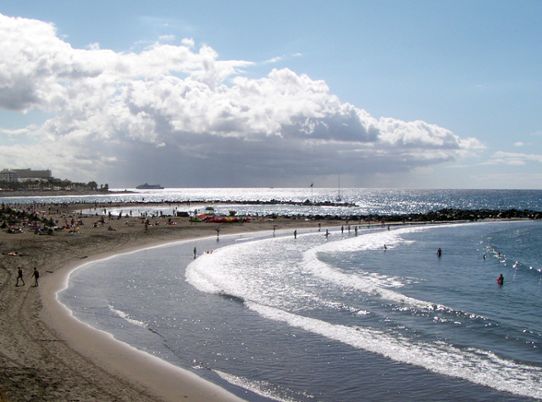In shallow areas where wave motion reaches the bottom, sediment on the bottom may be set in motion. This may cause erosion, if the sediment moved away is not replaced by other material coming in. Beaches and cliffs exposed to waves have a different fauna due to the mechanics of the waves.

On sandy beaches the sand is in constant motion. Sand banks are formed and changed depending on the sea level and the size of the waves. A wave breaks when the depth is less than 1.3 times the wave height. After a wave has broken, it keeps moving forward while continuing to break. After a certain distance the wave height has reduced so that the wave stops breaking and continues in towards the beach until it again has contact with the bottom and breaks against the beach.
If the wave group comes at an angle to the beach, it will bend so that the waves are almost parallel to the beach when they arrive. This is because the wave speed reduces for the part of the wave that first touches the bottom as it becomes shallower. In the same way, waves bend around promontories and islands making it hard to find shelter from waves.